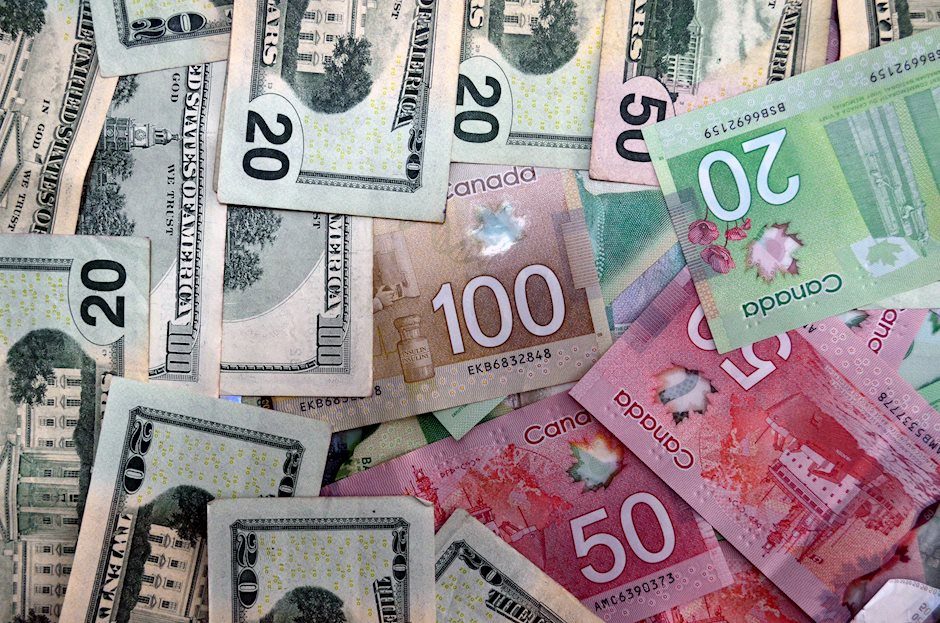USD/CAD trades around 1.3850 after retreating from eight-month highs
- USD/CAD declines due to a dovish sentiment surrounding the Fed’s policy trajectory in 2024.
- The US Dollar struggled as cooling inflation sparked discussions of the Fed implementing three rate cuts in this year.
- The upside of the commodity-linked CAD would be limited due to lower crude Oil prices.

USD/CAD pulls back after hitting an eight-month high at 1.3865 on Monday, trading around 1.3850 during the European hours on Tuesday. This downside is attributed to the dovish sentiment surrounding the US Federal Reserve’s (Fed) policy outlook in 2024
The US Federal Reserve (Fed) is expected to keep interest rates unchanged in Wednesday’s meeting. However, traders anticipate a Fed rate cut in September, with the CME FedWatch Tool indicating a 100% probability of at least a quarter percentage point cut. Additionally, signs of cooling inflation and easing labor market conditions in the United States have fueled expectations of three rate cuts by the Fed this year.
The downside of the USD/CAD pair could be limited as the US Dollar extends its gains due to risk aversion mood. However, the decline in US Treasury yields could put pressure on the Greenback and Loonie pair. 2-year and 10-year yields on US Treasury bonds stand at 4.39% and 4.18%, respectively, at the time of writing.
Meanwhile, the lower crude Oil prices exert downward pressure on the commodity-linked Canadian Dollar, limiting the downside of the USD/CAD pair. Given the fact that Canada is the biggest crude exporter to the United States (US). West Texas Intermediate (WTI) crude Oil price trades around $75.40 per barrel by the press time. WTI price extends its losses for the third session, attributed to a sluggish economic outlook in China and diminished supply concerns due to de-escalated Middle East tensions.
Canadian Dollar FAQs
The key factors driving the Canadian Dollar (CAD) are the level of interest rates set by the Bank of Canada (BoC), the price of Oil, Canada’s largest export, the health of its economy, inflation and the Trade Balance, which is the difference between the value of Canada’s exports versus its imports. Other factors include market sentiment – whether investors are taking on more risky assets (risk-on) or seeking safe-havens (risk-off) – with risk-on being CAD-positive. As its largest trading partner, the health of the US economy is also a key factor influencing the Canadian Dollar.
The Bank of Canada (BoC) has a significant influence on the Canadian Dollar by setting the level of interest rates that banks can lend to one another. This influences the level of interest rates for everyone. The main goal of the BoC is to maintain inflation at 1-3% by adjusting interest rates up or down. Relatively higher interest rates tend to be positive for the CAD. The Bank of Canada can also use quantitative easing and tightening to influence credit conditions, with the former CAD-negative and the latter CAD-positive.
The price of Oil is a key factor impacting the value of the Canadian Dollar. Petroleum is Canada’s biggest export, so Oil price tends to have an immediate impact on the CAD value. Generally, if Oil price rises CAD also goes up, as aggregate demand for the currency increases. The opposite is the case if the price of Oil falls. Higher Oil prices also tend to result in a greater likelihood of a positive Trade Balance, which is also supportive of the CAD.
While inflation had always traditionally been thought of as a negative factor for a currency since it lowers the value of money, the opposite has actually been the case in modern times with the relaxation of cross-border capital controls. Higher inflation tends to lead central banks to put up interest rates which attracts more capital inflows from global investors seeking a lucrative place to keep their money. This increases demand for the local currency, which in Canada’s case is the Canadian Dollar.
Macroeconomic data releases gauge the health of the economy and can have an impact on the Canadian Dollar. Indicators such as GDP, Manufacturing and Services PMIs, employment, and consumer sentiment surveys can all influence the direction of the CAD. A strong economy is good for the Canadian Dollar. Not only does it attract more foreign investment but it may encourage the Bank of Canada to put up interest rates, leading to a stronger currency. If economic data is weak, however, the CAD is likely to fall.
Author

Akhtar Faruqui
FXStreet
Akhtar Faruqui is a Forex Analyst based in New Delhi, India. With a keen eye for market trends and a passion for dissecting complex financial dynamics, he is dedicated to delivering accurate and insightful Forex news and analysis.

















